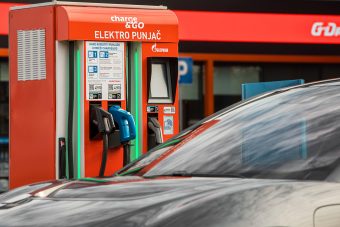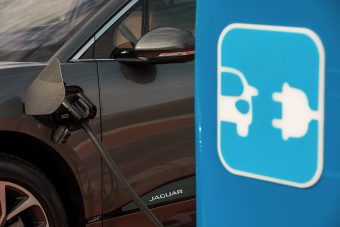
The path of sustainable transport in Serbia is slowly but surely being paved. The support of the Government, which for the third year in a row subsidizes the purchase of electric and hybrid vehicles, also contributed to that.
The state has allocated 5,000 euro subsidies for the purchase of new passenger vehicles and light trucks with a fully electric drive. At the same time for plug-in hybrids (which can be charged from an external electricity supply) whose carbon dioxide emissions do not exceed 50 g/km, it allocates 3,500 euro subsidies. For ordinary hybrid vehicles, which cannot be plugged into an external electricity supply and whose carbon dioxide emissions are less than 140 g/km, 2,500 euros is obtained. More than 400 electric cars and about 5,000 hybrids have been registered in our country thanks to this support system.
For electric cars to participate in traffic at all, it is necessary to develop the charging infrastructure. There are more and more electric chargers in Serbia. Thanks to the digital platform and the charge&GO application, drivers of these cars can quickly and easily find chargers nearby and recharge their vehicles.
Charge&GO has created the first regional digital platform and mobile application that displays a network of chargers for electric vehicles. The platform gives electric vehicle drivers the ability to access the charging point and the ability to pay for the use of chargers through the app. At the same time, companies can remotely manage their charger network thanks to this app. It includes several services such as charging control, charger performance monitoring, pricing, usage restriction and charging session review.
The difference between AC and DC chargers
AC and DC chargers are available to charge&GO users. Some have already been placed at the service of electric vehicle drivers throughout Serbia. Others are in the design and installation phase, and good locations are being intensively sought for new electric chargers, says Nemanja Grubješić, Head of Technical Sales at charge&GO.
Nemanja explained the difference between charging vehicles on AC and DC chargers. The biggest difference is reflected in the charging speed because electric vehicles have lithium-ion batteries that charge on DC voltage, so charging time is much shorter. “C chargers receive AC voltage, which is switched to DC in the car, thanks to its elements and charges the battery. This process is time-consuming, so the AC charger belongs to the slower type of charger, and it is used at home or in commercial facilities where people stay longer. The average charging time of an electric car on an AC charger is from four to eight hours.
In focus:
The whole system is a bit different when it comes to DC chargers. These models have an inverter that converts AC to DC, and it automatically charges the battery, which significantly speeds up charging time. The charging speed of the car also depends on the power of the DC charger. Fast chargers charge the battery between one and three hours, while ultra-fast chargers can charge a car battery in less than an hour.

“For longer life of the electric car, i.e. its batteries, AC charging is recommended, which is also the cheapest solution. Electric car drivers charge their vehicles mostly during the night when electricity is cheaper, and they are ready to drive in the morning. Charging between four and eight hours can fully charge the battery. It takes much less money to charge the battery of an electric vehicle to full capacity than to fill the tank of a car with an internal combustion engine”, Grubješić points out.
AC charger price
The type of AC charger is mostly chosen by drivers of electric cars who charge vehicles at home, although this model is often installed in commercial facilities, such as hotels and shopping malls. On the other hand, fast and ultra-fast DC chargers are installed at gas stations, busy roads, rest areas on highways, where electric car drivers can recharge or fully charge the vehicle battery in a short period of time.
“When someone decides to buy an electric car, he immediately thinks about buying a charger because he wants to provide himself with a safe charge. For the installation of a home charger, according to the turnkey system, it is necessary to set aside about 1,500 euros”, says Nemanja, emphasizing that charge&GO, in addition to offering a simple and fast service of charging electric vehicles through platform and application, also sells and installs electric chargers.
The team of charge&GO is working hard on building the infrastructure, and they plan to cover the entire territory of Serbia with the network of their chargers.
Nemanja says he always tries to acquaint the citizens with all the advantages that driving electric cars brings. As he points out, the team’s success behind the charge&GO platform is reflected in how much electromobility in our country is developing and growing. One of the incentives would be subsidies for the installation of chargers. This type of support, which is not new in Europe, would significantly improve and accelerate the expansion of the charger network in our country, affecting the number of electric cars on the streets.
Prepared by: Milica Radičević
Read the story in the new issue of the Energy portal Magazine ELECTROMOBILITY.



